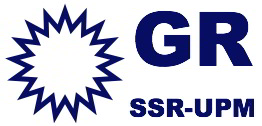SICOMORO
- Written by Belén Galocha Iragüen

Nowadays, an efficient action in emergency situations requires the co-ordination of several groups of people deployed on large areas, where traditional communications systems could not work or could not provide enough capabilities to perform the mission. New developments are required to support these activities and coordinate the different actions.
The starting hypothesis are:
- New applications (video, images, and high-speed data) for control and management emergency environments require a higher bandwidth and so, new communication systems.
- These wide bandwidths applications are of interest in the different emergency situation environments as natural disasters (earthquakes, floods, wildfire), terrorist attacks or situations of a wide flow of displaced people in war situations (humanitarian missions and refugee camps).
- The development of these new communication systems requires to use new frequency bands, with new designs of:
Communication subsystems such as antennas and RF systems.
Propagation problems related to the new frequency bands.
- According to the emergency environment, new communication elements such as UAV, helicopters, satellites, HUBs, appear. There are specific technologic problems in antenna design and in propagation studies according to the former communication element and the links with other elements.
There is a lack in the study of these specific radio channels, as the mobile link to satellite under the effect of the helicopter rotor blades or the earth to helicopter link in vegetation environments.
- Tropospheric refraction index spatial distribution determines microwaves propagation paths, system coverage and interference between systems. Earth-based weather radar data may provide estimates of the refraction index spatial distribution.
The UPM research group has a wide experience in system studies, in design, prototyping and antenna measurements and also in the study of propagation at the frequency bands concerned in this proposal.
This research group has participated in previous calls of the Plan Nacional as MAIN and CROCANTE in which special antennas were developed, as intelligent antennas for cellular systems, or an active and multibeam TX and RX antenna for terrestrial stations to link to a satellite.
People in the research group have participated in an active way in the “Antenna Centre of Excellence” web of the VI Frame Program of the European Union, where the possibilities of new antennas for different applications were analyzed.
On the other hand, people from this research group take part in CENIT and in PROMETEO projects. In this project, the problems of emergency situations due to wildfire, mainly focused in satellite communications, are under study. Other members of the research group have a wide experience in the development of telecommunication systems for development cooperation and humanitarian aid. Members of the group have participate in the European projects STAR and MOCCA, where new aeronautical communication systems and the new mobile and wireless systems were studied, addressing particularly in applications for developing countries. Also, research group members have participated in collaboration projects with CNES (as SATM), where the application of UMTS systems in satellite communications were studied.
Members of this research group joint the COST projects on communication networks modeling and simulation (256 y 285) and also in the antennas subsystem area.
Another objective of project is the development of radio channel models for the different links of the SICOMORO system. These models are needed to evaluate the design options and to adopt solutions that will mitigate the channel impairments.
The development of the satellite to helicopter link wideband radio model represents a major challenge. On the top of the ionosphere and troposphere impairments, the presence of the rotor blades will produce serious impairments such as shadowing, fading, multipath and delay spread, Doppler shift, etc on the radio link. This problem, different from the calculation of the radar cross section of a helicopter, has been scarcely studied. We may cite only an analysis of a satellite to helicopter narrowband system and the research project “Electromagnetic and Radio Channel Modeling of Rotor Modulation on Helicopter SATCOM Systems”, currently under development by Prof. C.A. Balanis at Arizona State University.
Another complex link will be from aerial units (helicopter or UAVs) to terrestrial units. Depending on the specific situation, (i.e. mountainous regions), these aerials units will not necessary be at a dominant position over the terrestrial units. Both end of the link will be mobile and multiple obstacles could lie between them, producing serious communication problems.
In the situations described, where different path topologies may be encountered and maybe different communication systems from different organizations will coexist, a follow-up of the temporal propagation conditions will be required to avoid black-outs of one system due to increase of interference levels from others. Radio propagation paths to low elevation satellites or over the sea can be seriously affected by anomalous tropospheric refraction leading to multipath and ducting. Attenuation by rain or other hydrometeors should also be considered. Real time estimation of these conditions will allow systems reconfiguration to avoid loss of coverage/reception. Earth-based weather radars are of primary need for short term extreme weather conditions that can worsen conditions in emergency areas. Its use in clear air conditions to estimate tropospheric radio propagation data is a novel topic.
The group at University of Vigo has an extensive experience in the knowledge needed to carry on the study of the radio links and channel modelling covered in this project. Related research topics as high frequency electromagnetic modeling, development of wideband channel measurement systems at radio and millimeter wave frequencies, analysis of results, study of diversity techniques to mitigate radio propagation impairments, theoretical and experimental analysis of dispersive propagation, etc, constitute the core of the researchers CVs, as can be seen on their list of funded projects and publications.
- Principal investigator: Belén Galocha Iragüen
- Participants: Universidad Politécnica de Madrid, Universidad de Vigo
- Funding: Ministerio de Ciencia e Innovación
- Partners: Universidad Politécnica de Madrid, Universidad de Vigo
- Duration: 3 años
- Project type: Proyecto de Investigación


